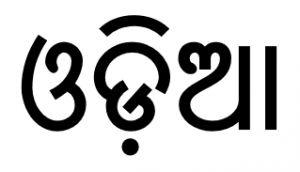Language/Odia/Grammar/Plurals
Hi Odia learners! 😊
In this lesson, we will learn about plurals in Odia. Plural is a grammatical number involving the representation of more than one thing or individual. As we know, grammar is the foundation of a language. So, let's dive in and learn the plural forms of nouns, verbs and pronouns in Odia.
After mastering this lesson, these related pages might interest you: Pronouns, Negation & Adjectives.
Plural Forms of Nouns[edit | edit source]
In Odia, the formation of plurals for nouns depends on the last letter of the word. Let's see some examples:
| Odia | Pronunciation | English |
|---|---|---|
| ମଣ୍ଡପ | môņḍôpô | Temple(s) |
| ହାତ | hā̃tô | Hands |
| ଦିକ | dīkô | Directions |
| ଛାତ୍ରଙ୍କ | chātrôngkô | Students |
As you can see, the plurals are formed by adding the suffix -ଙ୍କ (-ôngkô) at the end of the noun stem.
However, there are some exceptions where the stem undergoes a change before adding the suffix:
| Odia | Pronunciation | English |
|---|---|---|
| ଘର | ghôrô | House(s) |
| କୁଞ୍ଜ | kuņjô | Grove(s) |
| ତଳ | talô | Floor(s) |
In these cases, the stem undergoes a vowel change before adding the suffix -ଙ୍କ (-ôngkô).
Plural Forms of Verbs[edit | edit source]
The plural forms of verbs in Odia are formed by adding the suffix -ୁ (ū) at the end of the verb root. Let's see some examples:
| Odia | Pronunciation | English |
|---|---|---|
| ଖୁଆନ୍ତି | khuānti | (They) eat |
| ଯାଉନ୍ତି | yāūnti | (They) go |
| ପଢୁଅନ୍ତି | paḍhuônti | (They) read |
As you see, the suffix -ୁ (ū) is added at the end of the verb root to form the plural.
Plural Forms of Pronouns[edit | edit source]
In Odia, like in many other languages, pronouns come in three persons - first, second and third person. However, in Odia, unlike in English, even pronouns can be singular or plural. Let's see some of the plural forms of the pronouns in Odia:
| Pronoun | Pronunciation | English |
|---|---|---|
| ଆମେ | āmē | We |
| ତୁମେ | tumē | You (plural) |
| ସେ | sē | They |
Here, ଆମେ (āmē) means 'We', ତୁମେ (tumē) means 'You' (plural) and ସେ (sē) means 'They'.
Dialogue[edit | edit source]
Here's a dialogue between two friends, Alok and Dinesh, talking about the plural forms in Odia.
- Alok: ତୁମେ କିପରି ଅଂଶାରେ ଅଛୋ? (tumē kipari aṃśārē achō?) - Are you living with roommates?
- Dinesh: ହଁ, ଆମେ କିଛି ସହେଲୀ ସହିତ ରୁମରୁମ୍ ଚାଳାଉଛୁ। (hai, āmē kiṭhi sahēlī sahitō ruṃrim chālāūchu) - Yes, I am sharing my apartment with some roommates.
Advantages of Learning Odia Grammar[edit | edit source]
Learning grammar not only helps us in understanding the structure of the language but also helps us in communicating effectively. Here are some advantages of learning Odia grammar:
- It helps you in understanding the context of the conversation. - It makes you confident while speaking and writing in Odia. - It helps you in building correct sentences.
You can learn more about Odia grammar by visiting the Grammar section of our website.
Conclusion[edit | edit source]
In this lesson, we learned about plural forms in the Odia language. We learned that the suffix -ଙ୍କ (-ôngkô) is used to form the plural nouns; suffix -ୁ (ū) is used to form the plural verbs and that pronouns in Odia can also be singular or plural.
If you have any questions, please ask them in the comments section below.
If you want to practice more with native speakers, you can visit Find native speakers and ask them any questions!
Sources[edit | edit source]
Well done on mastering this lesson! Don't miss these related pages to expand your knowledge: Resources, How to Use Have & Questions.
Other Lessons[edit | edit source]
- Give your Opinion
- Conditional Mood
- How to Use Be
- Negation
- How to Use Have
- Pronouns
- Questions
- Adjectives

